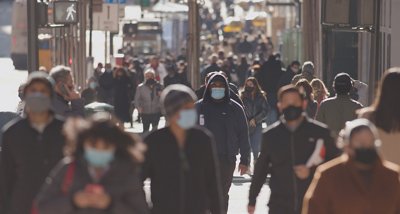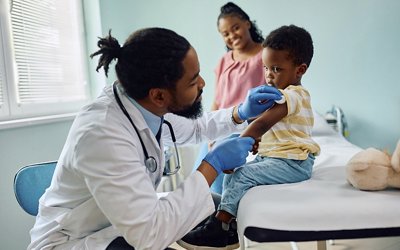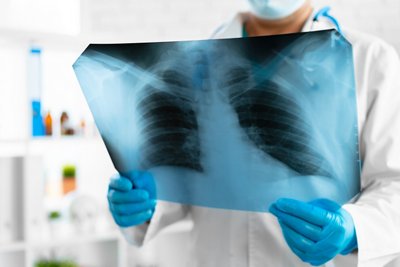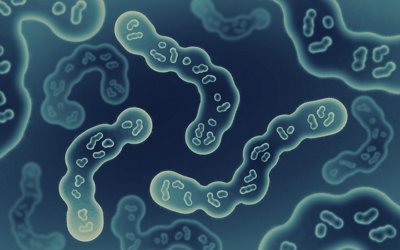Diagnostics and Biopreparedness: How can the World Improve its Response to the Next Infection Crisis?
By the bioMérieux Editors | Reading time: 3 min
PUBLICATION DATE: DECEMBER 06, 2023
Diagnostics play a vital role in the fight against infectious outbreaks, but these tools need to be developed early enough to enable a rapid and effective response. This is where preparedness is essential.
What is Biopreparedness?
According to Matt Scullion, Vice President of Sales and Marketing for BioFire Defense at bioMerieux, “Biopreparedness is a holistic concept. It’s the ability to identify new or re-emerging infectious diseases in order to quickly and effectively respond.” It refers to the proactive measures and strategies put in place by governments, professional and other organizations, and communities to prepare for and respond to biological threats and emergencies. These threats can include natural outbreaks of infectious diseases, bioterrorism incidents, and other public health crises. Biopreparedness is essential for safeguarding public health and national security, as it helps minimize the impact of biological emergencies and enhances the ability to respond swiftly and effectively to protect the well-being of individuals and communities.
In the context of diagnostics, Matt Scullion says that biopreparedness means, “having the ability to diagnose rapidly and early when faced with an outbreak or critical situation so that we can contain it.” Understanding the factors that contribute to the development and spread of infectious diseases, the various diagnostic tools and their performance, how diagnostics support infectious disease response, and the multiple challenges involved, are all important for improving global biopreparedness.
How Do Diagnostics Support Infectious Disease Response?
Over the last few decades, the world has had to deal with numerous infectious disease outbreaks of which the general public had never been aware, and about which even medical and public health specialists were surprised: Ebola in 2014, Zika in 2015, SARS-CoV-2 in 2019, for example. Scullion also notes that, “There are diseases that don’t get a lot of lay press coverage in the United States or Western Europe because those populations are not being directly affected by them …but all of these diseases are just a plane ride away, and so things can move around quickly.”
Diagnostic tools are indispensable in biopreparedness for several critical reasons. Firstly, they enable the swift identification of responsible pathogens in individual patients. Rapid and accurate diagnostics aid in the early identification, containment and treatment of affected individuals, reducing the spread of infections. This is particularly important for virulent and deadly diseases such as Ebola, which spreads easily and has an average mortality rate of around 50%. Even for diseases with lower virulence and mortality, diagnostics play an important role in managing and reducing the burden of disease on individual patients and society at large.
Moreover, diagnostic tools are crucial elements for accurate surveillance and monitoring efforts, helping authorities detect potential outbreaks or clusters before they escalate. Diagnostic tools are also vital in following infectious events to assist with public health responses and effective resource allocation (like medical supplies, treatments, and vaccines), and diagnostics then inform us of the effectiveness of those interventions. In summary, diagnostics are essential tools and the cornerstone of a proactive and effective biopreparedness strategy, saving lives and minimizing the impact of biological emergencies.
What are Some Challenges in Diagnostic Biopreparedness and How Can We Address Them?
Although diagnostics are critical to biopreparedness, Scullion notes that events such as the SARS-CoV-2 pandemic present special challenges because, “If you’re developing a diagnostic for something new and emerging, then you’re already behind the curve of the outbreak or the new disease.” In this context, addressing challenges in areas such as research and development, manufacturing, distribution, and utilization becomes critical.

In research and development, it is difficult to predict what pathogens will arise and where. By definition, novel pathogens haven’t previously infected humans, so information about such pathogens may be limited or not available at all during the early stages of an outbreak. The lack of information about novel pathogens makes it difficult or impossible to develop diagnostics in advance. However, Matt Scullion says that, “Rapid sequencing has become so ubiquitous and readily available that identification of these pathogens usually happens within weeks of an outbreak of a new and emerging infectious disease—especially if it's spreading quickly.” Access to data may still be difficult though, particularly for extremely dangerous pathogens such as Ebola because special laboratories and precautions are required, but it is crucial for developing accurate tests for new strains.
In diagnostic test development, testing of a diagnostic assay with real-world specimens is absolutely crucial for test validation. But this can be difficult or extremely complicated without pre-arranged access to patient specimens, appropriate biobanks, or nearby clinical settings – especially once an emergency is declared and such arrangements become exceedingly complex or slow. The absence of access to well-characterized clinical specimens has become one of the biggest obstacles or rate-limiting steps in developing or validating important diagnostic assays during an infection crisis.
In manufacturing, supply shortages of critical components may constrain the pace of manufacturing diagnostic tests, as experienced with the COVID-19 pandemic. In some cases, companies can take steps to vertically integrate portions of their supply chain, which increases their control over the resources needed to manufacture diagnostic tests. “Historically we've kept excess inventory for what we call, ‘safety stock’ on hand,” says Scullion, “essentially enough stock to get through a normal period of time to deal with supply chain disruptions or seasonal constraints that can happen. COVID made us more sensitive to that. It made us set up our own processes to become more independent and more self-sustainable rather than relying on other manufacturers to supply us.”
The range of regulatory requirements also poses a challenge to manufacturers, because they are often region-specific, complex, and costly. However, regulatory approval remains a necessity.
Finally, healthcare providers and laboratory personnel must use the diagnostic tests correctly, which means providing education, training, quality control, and support.
How Can We Improve Our Global Biopreparedness for the Future?
A major issue that broadly affects biopreparedness is the “panic and neglect” cycle of public funding, where resources are invested during and right after an outbreak but tend to dry up after the immediate threat has passed. Lack of consistent investment from all stakeholders across the globe makes it difficult to improve biopreparedness for the long term. Diagnostic development is no exception. However, if we can break the “panic and neglect” cycle and focus on investing in public health infrastructure that supports global health security, we can be better prepared for future infectious disease outbreaks.
With that objective in mind, bioMérieux collaborates with partners and stakeholders to develop diagnostics that not only identify existing pathogens that are common in humans, but also those that have been identified as potential threats. Examples include influenza and coronaviruses, which are both extremely large classes of viruses with strains that impact humans and strains that do not—but have the potential to do so. Moreover, bioMerieux establishes close connections and pre-arranged agreements with key hospitals, laboratories and clinical units in order to rapidly, efficiently and compliantly obtain critical specimens or access to vital biobanks for assay creation and validation, should an infection crisis be identified.
In addition to developing new diagnostic tools, adopting digital technologies can facilitate better utilization of diagnostic data, which can inform infection control strategies. These technologies can also be used to create accessible dashboards to keep the public informed, equipping individuals with the knowledge they need to contribute positively to the public health response.
Finally, ensuring equitable access to diagnostics is a priority. Roughly 47% of the global population has little to no access to diagnostics, which is a major issue because of the critical role that diagnostics play in the fight against infectious diseases. There is no single solution to this problem; instead, change will need to be achieved in a variety of areas to meaningfully improve diagnostic access.
Diagnostics are foundational to public health and our ability to combat infectious diseases—and therefore foundational to biopreparedness. Continued investment and innovation in the field of diagnostics are crucial to building sustainable infrastructure to support biopreparedness so that the world can improve its response when faced with the next infection crisis.
YOU MAY BE INTERESTED IN THESE ARTICLES
SHARE THIS ARTICLE:
- News and Trends


